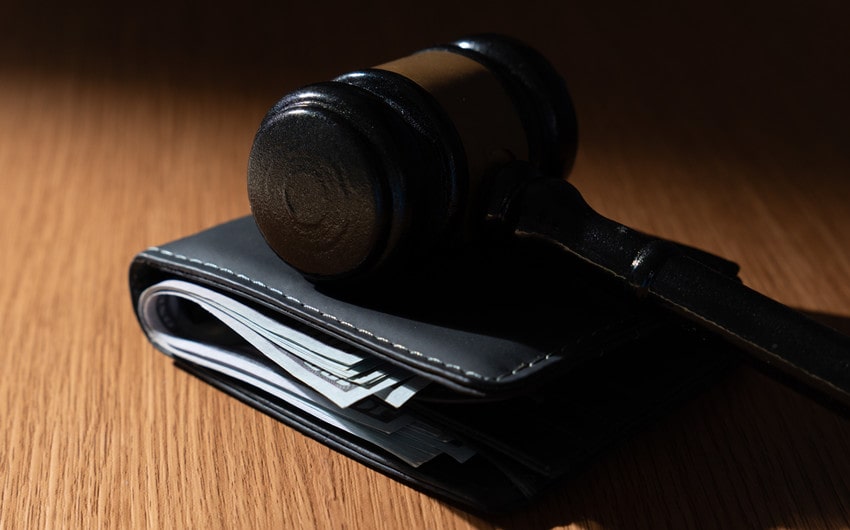Protecting Your Income From Garnishment
Start With a Calm, Early Response
Getting a notice about wage garnishment is scary, but the first move is to slow everything down and get organized. Open the letter, note dates and deadlines, and file every page together. Then contact the creditor right away. Early conversations can lead to payment plans, reduced balances, or even a pause while you verify the debt. The sooner you reach out, the more options you keep.
Money pressure can make quick fixes look tempting. In the scramble you might even search for short term options like auto title loans in Bakersfield. Before you go there, map all your choices. Many people can protect part of their paycheck through legal exemptions, set up realistic payment agreements, or get help from a nonprofit counselor. A rushed decision made under stress often costs more than a steady plan made with clear information.
Know What Garnishment Is—and What It Is Not
Wage garnishment happens when a court or government agency orders your employer to send a portion of your paycheck to a creditor. It usually follows a lawsuit and a judgment, though unpaid taxes, child support, and federal student loans can trigger garnishment without a traditional court case. Garnishment does not mean you have no rights. It means the clock is running and your next steps matter.
Learn the Federal Baseline and Your State Rules
Federal law sets a nationwide floor of protection through the Consumer Credit Protection Act. In most cases, only the amount above a certain weekly threshold can be garnished, and there is a cap on the percentage that can be taken. To get oriented, review the U.S. Department of Labor’s plain language explainer on limits to wage garnishment under federal law. Then check your state rules, which might offer stronger protections, different exemption amounts, or special forms you must file to claim them.
Claim Your Exemptions the Right Way
Exemptions are legal shields for a part of your income and sometimes for specific sources, such as Social Security, veterans benefits, or child support you receive. In many places, exemptions do not apply automatically—you must claim them. Read your garnishment notice carefully for instructions and deadlines. If a court provides an exemption form, fill it out completely and submit it before the deadline. Keep a copy for your records and send another copy to the creditor or collections lawyer if required. If your pay includes protected benefits, notify your payroll department in writing so protected funds are not mistakenly withheld.
Challenge Errors and Improper Garnishments
Mistakes happen. Amounts can be miscalculated, debts can be too old, or the wrong person can be targeted. If you do not recognize the debt, ask for validation in writing. If numbers look off, request a recalculation and prepare to show pay stubs or benefit letters. When you have a legal reason to object—such as identity theft, a satisfied judgment, or a violation of your state’s limits—file a written challenge with the court and attend the hearing. Bring documents, dates, and a calm, clear explanation.
Talk to the Creditor Before the First Deduction
Even with a valid judgment, many creditors will consider a voluntary payment plan that is faster and simpler than garnishment. Offer an amount you can actually pay and propose an automatic draft date that matches your pay cycle. Get every agreement in writing before the first payroll deduction. If the creditor agrees to pause or stop the garnishment, confirm that they have notified the court and your employer in writing.
Ask for Help From a Neutral Guide
A nonprofit credit counselor can help you sort debts, make a budget that fits real life, and approach creditors with a workable plan. Look for organizations that are accredited and do not pressure you into one-size-fits-all programs. The Consumer Financial Protection Bureau explains how garnishment works and how to choose reputable help; start with their overview of wage garnishment and your rights. A short session can clarify next steps and keep you from missing deadlines.
Protect Your Bank Account, Too
Garnishment can target wages, but some creditors try to levy bank accounts as well. Keep protected benefits in an account that receives only those benefits when possible, which makes the protected status easier to prove. If your account is frozen, act quickly. Banks must follow certain rules, especially when federal benefits are involved. Gather proof of protected deposits and request a release for exempt funds. Do not ignore a levy notice; response windows can be very short.
Coordinate With Your Employer’s Payroll Team
Payroll cannot give legal advice, but they can tell you how deductions will appear, when they start, and what documentation they need to stop them. Provide any court-approved exemptions or settlement letters promptly. If you change jobs, garnishment orders may follow you, so keep copies of everything and be ready to update your new employer if needed.
Consider Bankruptcy Only as a Last Resort
Bankruptcy immediately triggers an automatic stay that stops most collection actions, including garnishments. It is a powerful tool, but it is not a casual one. It affects your credit profile and can have long term consequences. If you are considering this route, talk with a qualified attorney or review neutral resources first. The U.S. Department of Justice offers a straightforward introduction to bankruptcy basics through the U.S. Trustee Program. If bankruptcy makes sense, filing sooner can prevent more lost income.
Keep Good Records and Set a Short Review Cadence
Create a simple folder—paper or digital—for notices, court filings, agreements, pay stubs, and emails. Each payday, verify that the withheld amount matches the order and your exemptions. If you pay down the debt or reach a settlement, confirm in writing that the creditor has filed the release with the court and notified your employer. Documentation shortens disputes and speeds corrections.
Stabilize Your Budget While You Resolve the Garnishment
Even a small reduction in take home pay hurts. Stabilize what you can control. Move due dates to match your pay cycle, pause nonessentials, and route a small automatic transfer to a basic emergency cushion once the immediate crisis is contained. These adjustments keep other bills from falling behind and prevent a new spiral.
Use a Short Script for Tough Calls
When emotions are high, clear words help. Try this structure when calling a creditor or clerk. State your name and case number. Say what you received and the date. Ask your question or propose a solution in one sentence. Confirm next steps and the deadline. Thank them and note the person’s name. Short, polite calls get better results and create a paper trail you can rely on.
Know When to Reassess
Your situation can change. If your income drops, ask the court about modifying the garnishment. If the debt is nearly paid, request an updated payoff letter and a clear timeline for ending the deductions. If you move, update your address with the court and creditor so you do not miss important notices.
Final Thought
Protecting your income from garnishment is about acting early, knowing your rights, and staying organized. Read every notice, claim exemptions on time, and challenge errors. Open the door to reasonable payment plans, lean on credible guidance when you need it, and keep accurate records from first letter to final release. With steady steps and clear information, you can limit the damage, regain control of your paycheck, and build a path back to financial stability.





